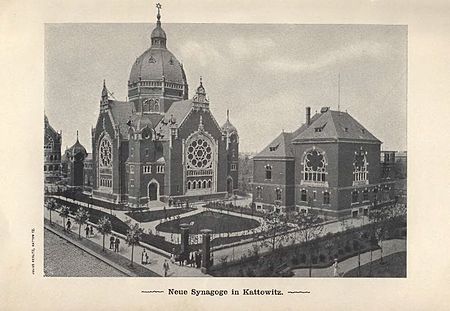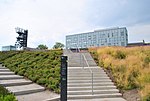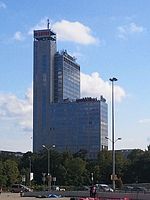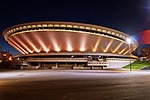Great Synagogue (Katowice)
Buildings and structures in KatowiceGothic Revival architecture in PolandGothic Revival synagoguesRenaissance Revival synagoguesSynagogue buildings with domes ... and 2 more
Synagogues completed in 1900Synagogues in Poland destroyed by Nazi Germany

Great Synagogue was the largest synagogue in the city of Katowice (Kattowitz), in southwestern Poland. It was erected in 1900 in what was then the German Empire, and was designed by Max Grünfeld. The synagogue was set on fire by the Nazis in early September 1939 during the invasion of Poland.
Excerpt from the Wikipedia article Great Synagogue (Katowice) (License: CC BY-SA 3.0, Authors, Images).Great Synagogue (Katowice)
Adama Mickiewicza, Katowice
Geographical coordinates (GPS) Address Nearby Places Show on map
Geographical coordinates (GPS)
| Latitude | Longitude |
|---|---|
| N 50.261111111111 ° | E 19.018888888889 ° |
Address
Szama
Adama Mickiewicza
40-092 Katowice (Śródmieście)
Silesian Voivodeship, Poland
Open on Google Maps











